Progressive Safe System (DVS 2024)
The new Direct Vision Standard (DVS) requires HGVs to install a Progressive Safe System Kit before October 2024 to operate in London.
Introducing the Progressive Safe System (PSS)
What Is The Progressive Safe System for DVS 2024
Starting October 28, 2024, heavy goods vehicles (HGVs) over 12 tonnes with a star rating below 3 will need to install extra safety equipment. This change is part of the Direct Vision Standard (DVS) updates, which previously focused on vehicles with a star rating below 1. After October 27, 2024, all existing DVS permits will be invalidated, requiring HGVs with a DVS rating of 0 to 2 stars to add new safety equipment to meet the updated Progressive Safe System requirements.
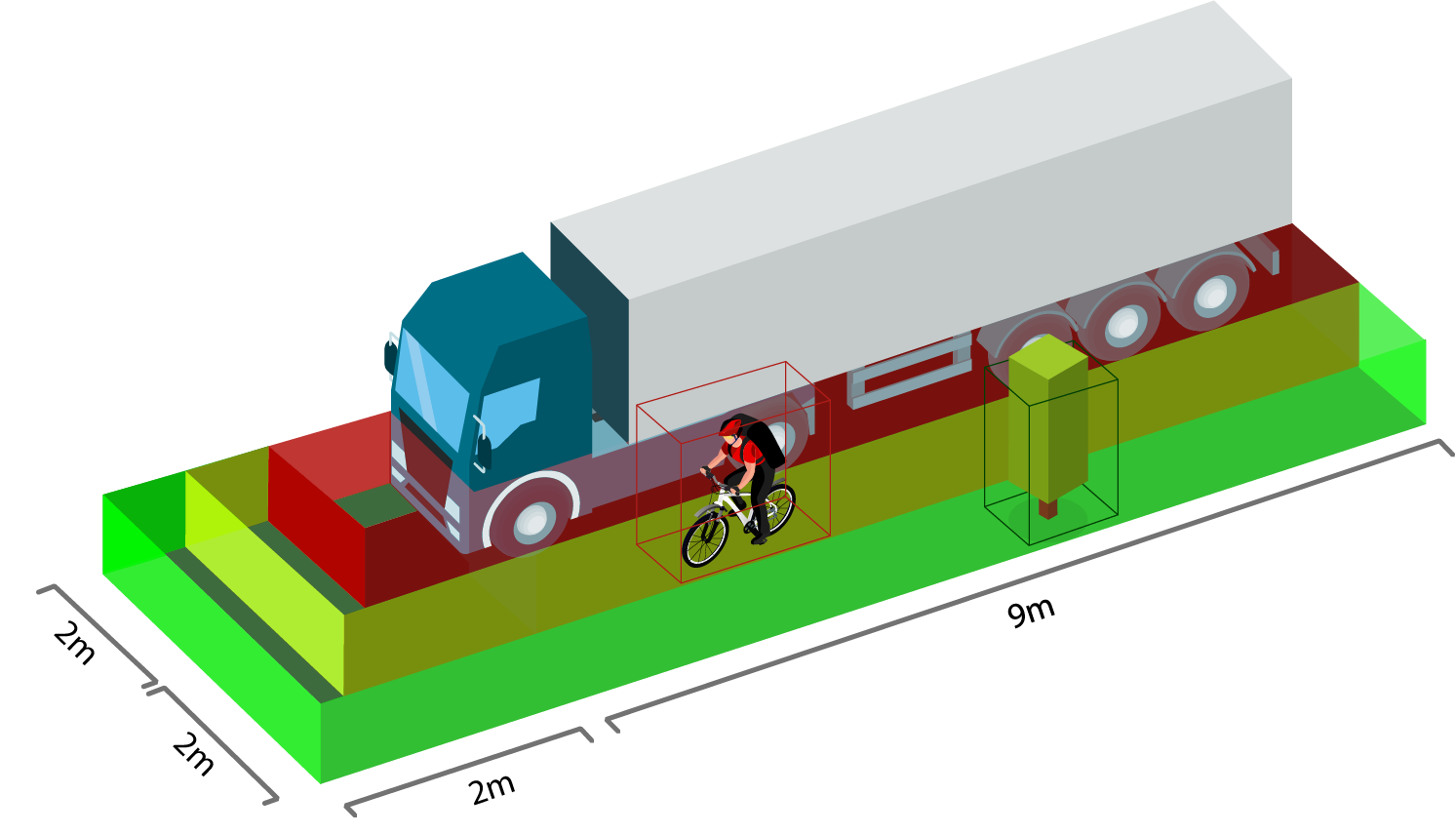








Unveiling Two Solutions to Your Compliance Needs
Progressive Safe System (DVS 2024) Kits
MOIS
We offer a solution that meets the new requirements for Heavy Goods Vehicles (HGVs). Our front sensor system is designed to activate in response to proximity information signals. This effectively detects the presence of pedestrians or cyclists.
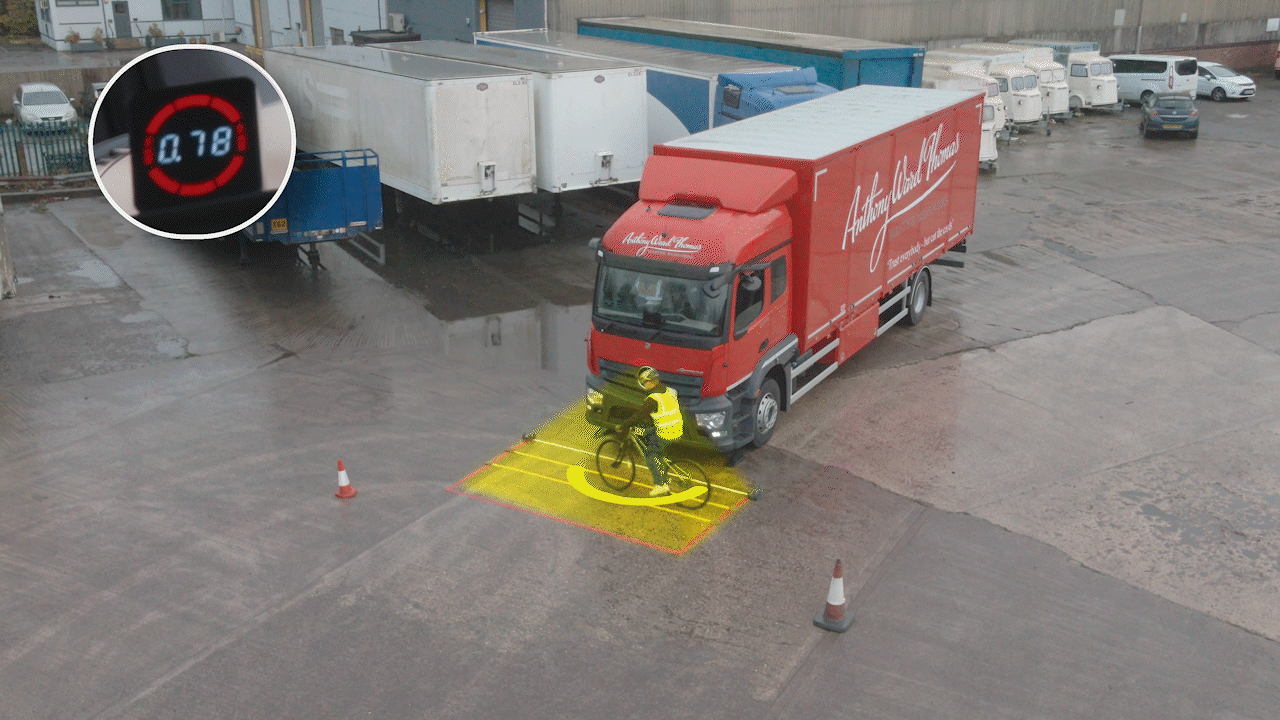
BSIS
Our solution includes installing Blind Spot Information Systems (BSIS) to your vehicle. Our BSIS sensor provides complete nearside coverage without false triggers. It is able to do so by distinguishing roadside furniture from stationary vehicles, ensuring your safety on the road.
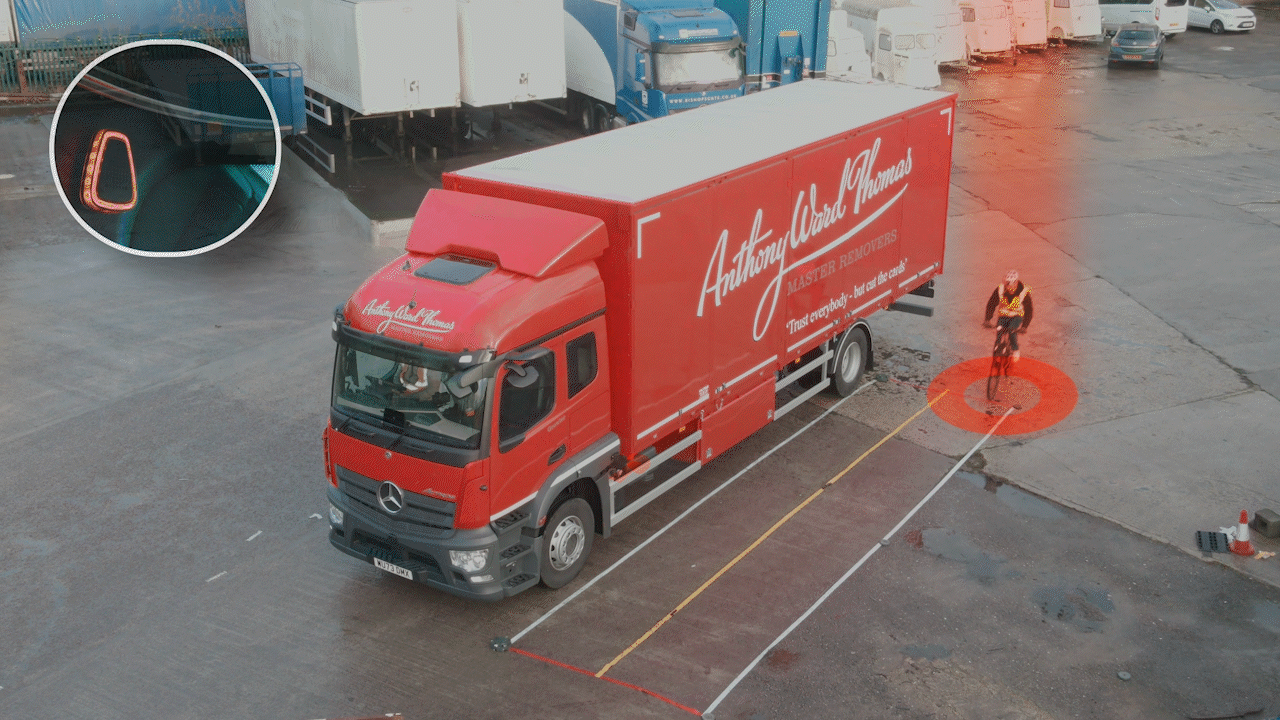
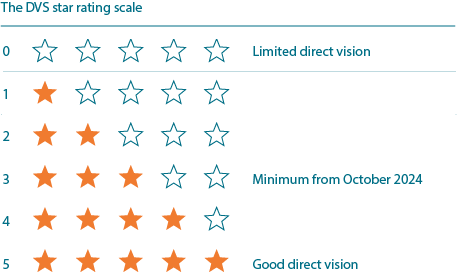
When do I need to have the DVS 2024 Progressive Safe System (PSS) Fitted?
Requirements
Starting in October 2024, if your Heavy Goods Vehicles (HGVs) weigh over 12T and have a safety rating of 3 stars or lower. To operate in Greater London, a DVS Progressive Safe System is required for a Safety Permit, enabling legal travel within the area. Transport for London (TfL) recently concluded a public consultation on the Direct Vision Standard (DVS) for 2024 and the proposed specifications for the Progressive Safe System. Permits granted after October 2024 will be valid for 10 years.
Find the star rating for your vehicle
Join thousands of fleets running on Fleet Witness Live
Have questions? Call us at
(+44) 203 897 3600
The Progressive Safe System includes new features:
Provide different severity warning signals to alert you to the seriousness of the imminent collision
Predict collisions by analysing the trajectories of both the vehicle and the vulnerable road user (VRU) to determine if a collision is likely
Differentiate between moving and road side furniture
The collision warning system must utilise a combination of at least two types of signals, such as optical, acoustic, or haptic, to effectively alert drivers
There should be two alarms: one when the driver detects a vulnerable road user (VRU) while preparing to move off, and another when the vehicle detects a VRU after starting its forward manoeuvre
When the vehicle is stationary, the system must signal the driver regarding any vulnerable road users (VRUs) present or entering the critical blind spot in front of the vehicle
Detailed Requirements For The Progressive Safe System (PSS) in 2024
To ensure comprehensive coverage along the nearside of the vehicle, install blind spot information systems. These sensors should not activate in response to stationary vehicles or roadside furniture unless a collision is imminent.
For articulated vehicles, position sensors strategically on the tractor unit to provide sufficient nearside coverage without triggering by the trailer itself. These sensors should enable detection within the defined zone, including areas adjacent to a semi-trailer. Tailor the specific implementation to what works best for the technology supplier and the vehicle operator.
Regardless of whether mirrors are already fitted, install a camera monitoring system to eliminate blind spots on the nearside of the vehicle. Position in-cab monitors near a window edge or existing mirror location to minimize driver distraction. A mirror replacement camera system may serve as an alternative to fitting Class V and VI mirrors.
Additionally, a mirror replacement camera system can be used as an alternative to fitting Class V and VI mirrors. Monitors intended solely for displaying blind spots related to low-speed manoeuvring may deactivate at speeds above 20mph.
Note that the installation of this camera monitoring system and the BSIS system, is optional and not currently required to conform to the new PSS legislation. While it offers a valuable solution for eliminating all nearside blind spots, compliance is not mandatory.
Blind spot information systems are required to be installed in the vehicle to ensure comprehensive coverage along the nearside of the vehicle. It is essential that these sensors do not activate in response to stationary vehicles or roadside furniture unless a collision is imminent.
For articulated vehicles, sensors must be strategically positioned on the tractor unit to offer sufficient coverage of the nearside without being triggered by the trailer itself. These sensors should enable detection within the defined zone, including areas adjacent to a semi-trailer. The specific implementation can be tailored to what works best for the technology supplier and the vehicle operator.
Mandated vehicles must have audible warning equipment to alert nearby pedestrians, cyclists, and other road users of turning manoeuvres. The volume of this warning, measured at a one-meter distance from the sounder, should range from 65 to 88 decibels/dB(A).
Operators are encouraged to install an audible warning system combining spoken warnings and white noise. Ideally, such devices should require minimal driver intervention and include a manual on/off switch for use between 23:30 and 07:00.
For left-hand drive vehicles, fitting an audible vehicle manoeuvring warning is imperative to alert pedestrians and cyclists during right turns.
Display warning signage on the rear of the Rigid Vehicle & any trailer unit in use, not the front tractor unit.
Design the signage to warn people walking and cycling of the hazards posed when near the vehicle.
Ensure the signage is not offensive or does not give instructional advice to people walking and cycling. The text point size must be legible to a cyclist or pedestrian at a reasonable distance from the vehicle.
Use signage of at least A3 size.
Location tracking
Applying for DVS Permit
Find the star rating for your vehicle
Find out the DVS star rating of your heavy goods vehicle (HGV) over 12 tonnes gross vehicle weight and apply for a permit if required.
Install the necessary equipment and signage
Install a DVS Progressive Safe System (if your HGV DVS star rating is less than three)
Submit your application
Once you have completed the previous 2 steps, head back over to the TfL’s portal and start the DVS application for your HGV.
Penalties
Starting 26 October 2020, driving an HGV in London without a valid permit can result in a penalty charge notice (PCN) of up to £550. This amount is reduced to £275 if paid within 14 days, with a separate £130 fine for the driver.
TFL can also revoke or suspend a permit if a vehicle that has been granted a permit is later found to be in breach of the permit terms.
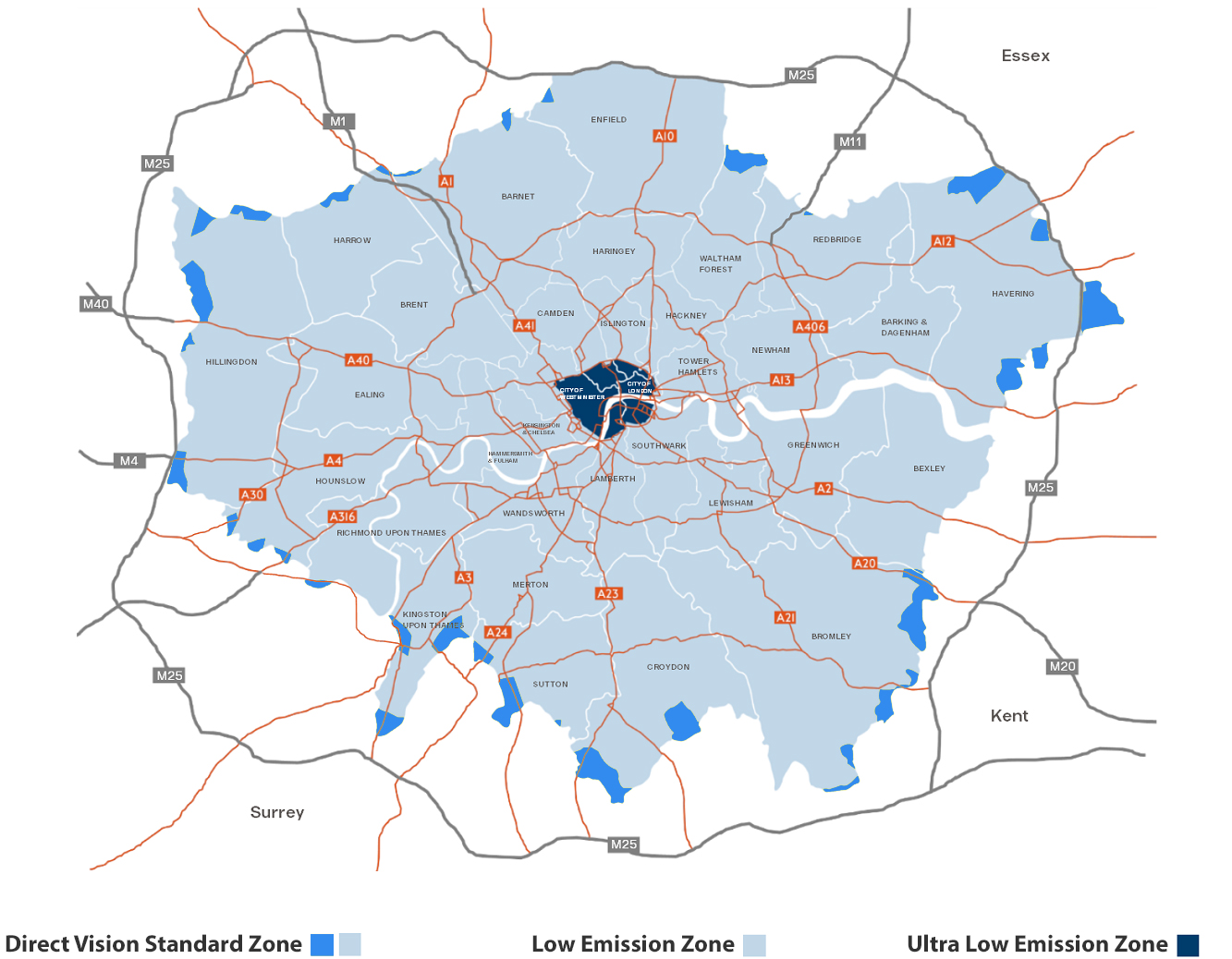
Our latest updates, blogs & industry insights
News & events

Resource Centre
Browse our latest blog posts, helpful guides, videos, and expert opinions on a variety of industry-related topics.

Case Studies
Check out our case studies and discover how we’re helping fleets improve the way they manage drivers and vehicles.

Resellers & Careers
Whether you want to resell our solutions, integrate with our platform, or join our growing team — we’d love to connect.


